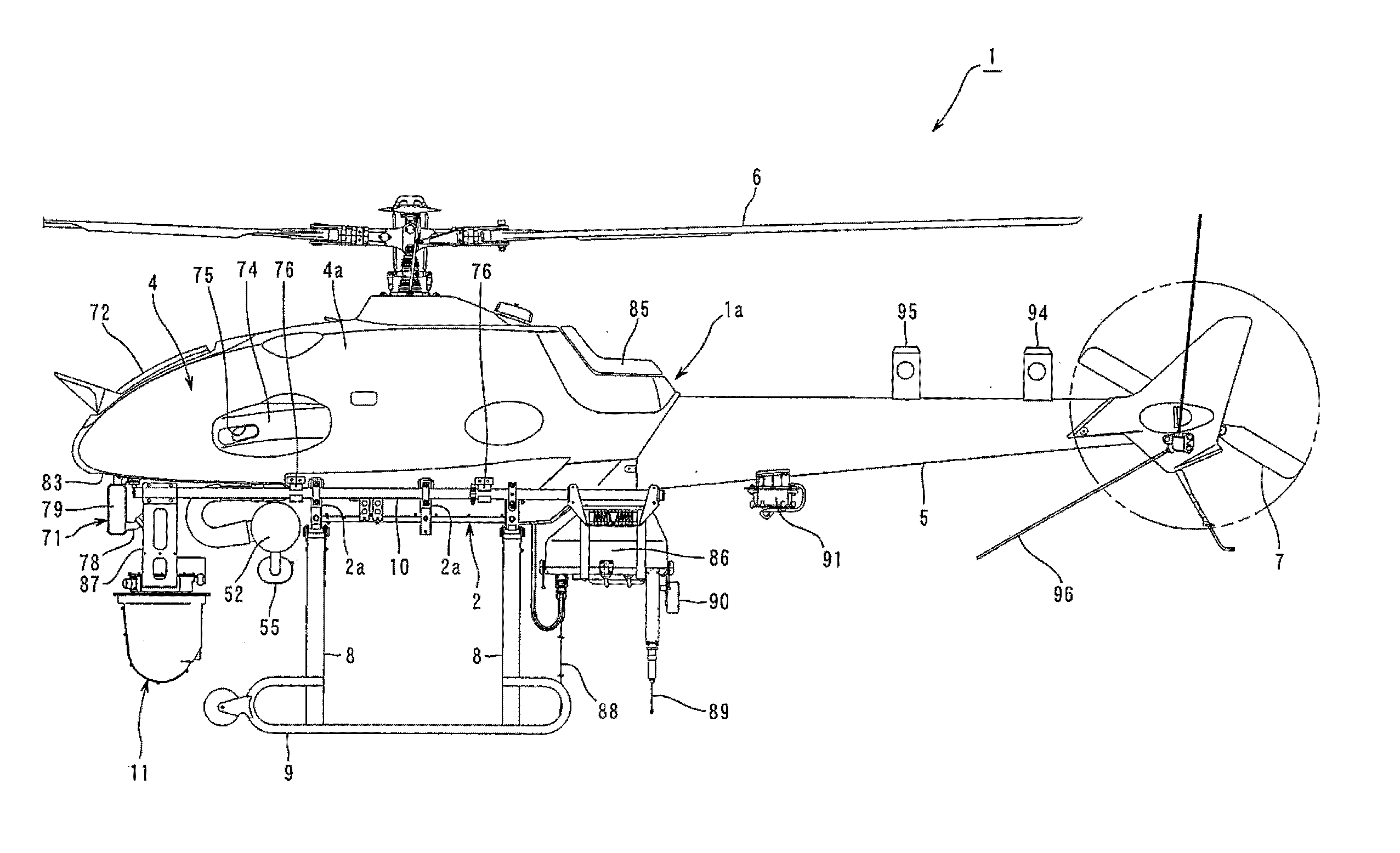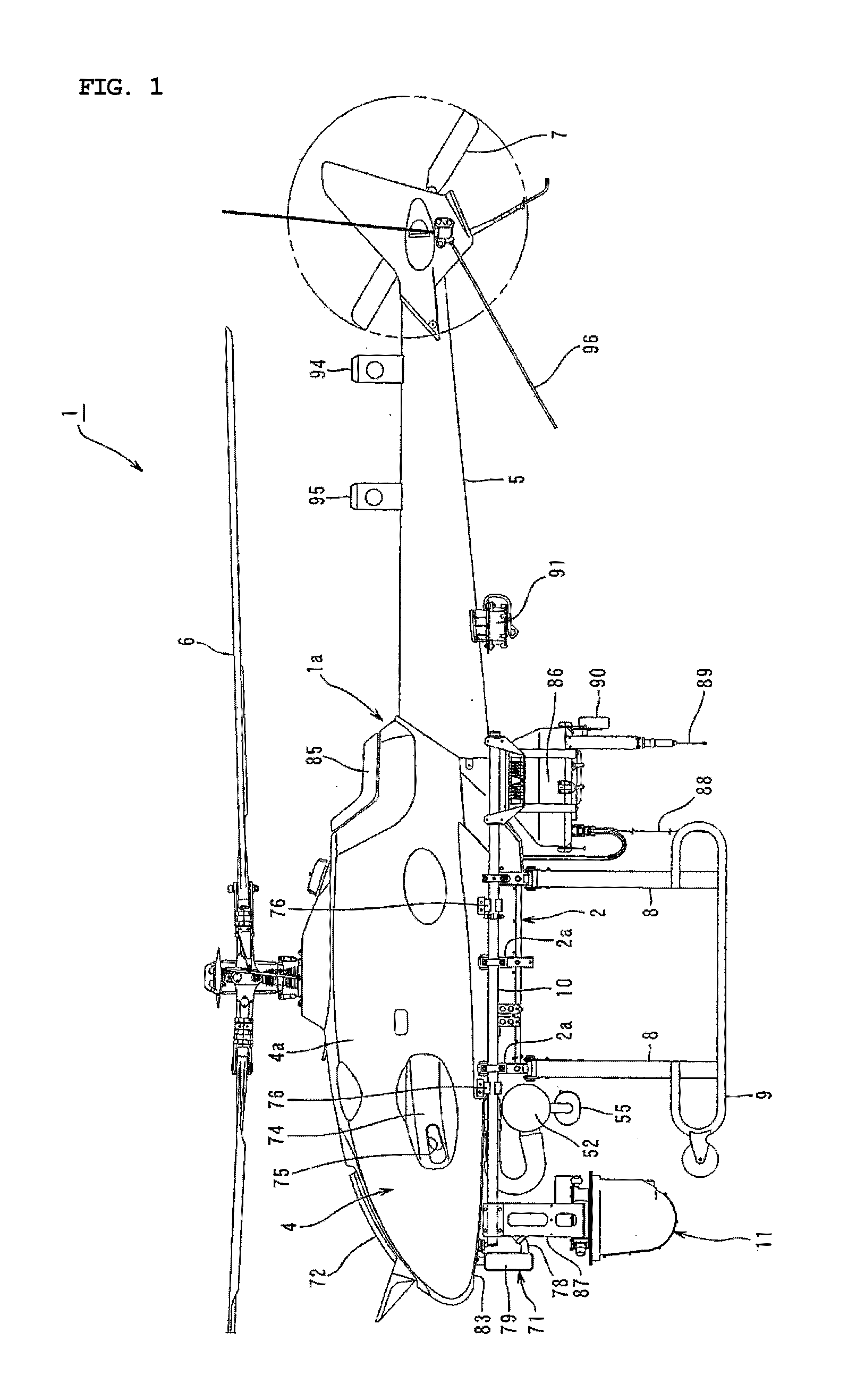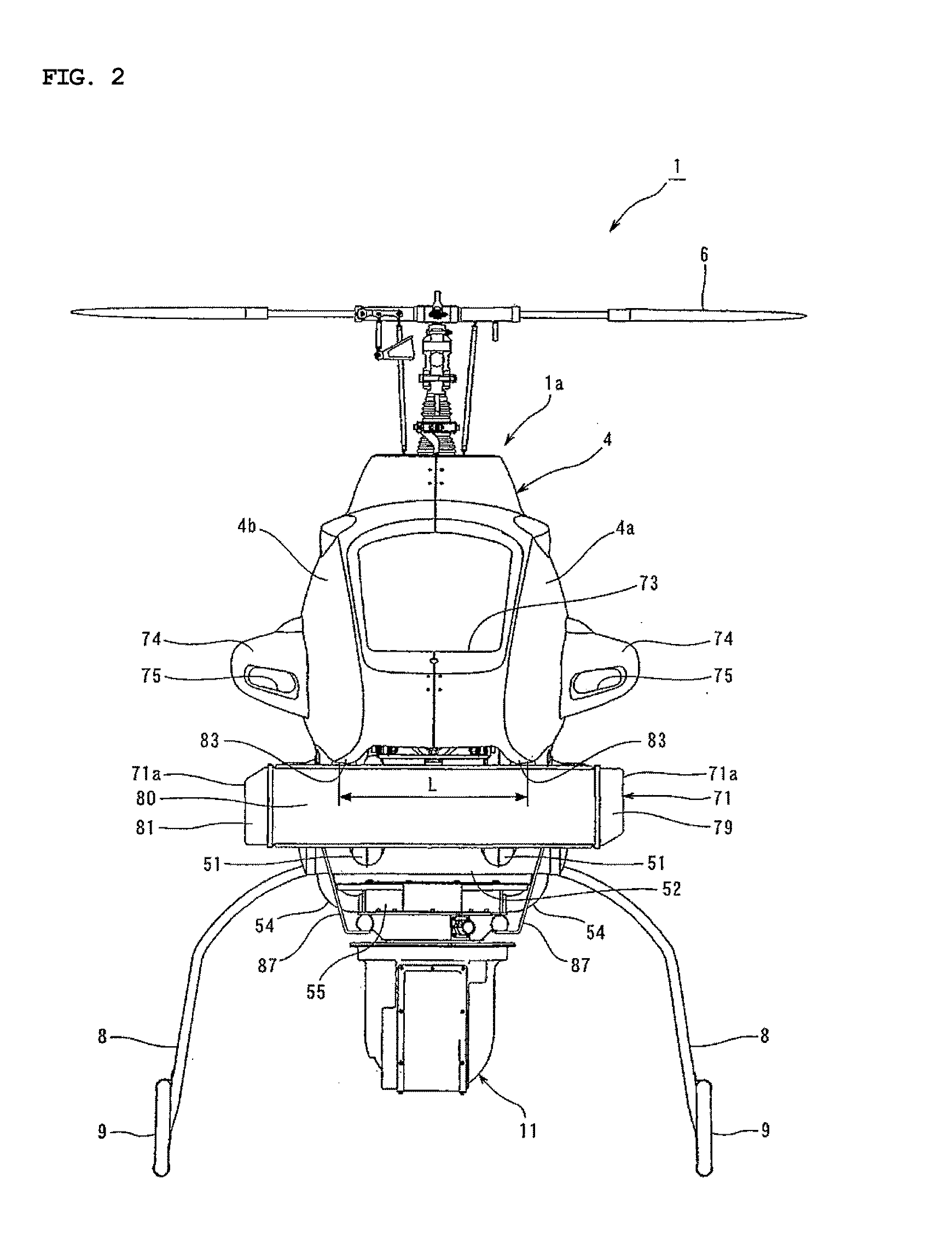Unmanned helicopter
a helicopter and helicopter body technology, applied in the field of unmanned helicopters, can solve the problems of front surface, reduced cooling performance, and downwashing, and achieve the effects of improving cooling performance, improving cooling performance, and large area
- Summary
- Abstract
- Description
- Claims
- Application Information
AI Technical Summary
Benefits of technology
Problems solved by technology
Method used
Image
Examples
first embodiment
[0024]An embodiment of the unmanned helicopter according to the present invention will be described hereinafter in detail with reference to FIGS. 1 to 5.
[0025]An unmanned helicopter 1 according to the embodiment has an airframe 1a including a body frame 2 described below (see FIG. 4 and FIG. 5), a power unit 3 mounted on the body frame 2, a main body 4 covering the outer circumference of the body frame 2 except the bottom area (see FIG. 1 to FIG. 3), and a tail body 5 connected to the rear end of the body frame 2. A main rotor 6 is provided on the upper part of the main body 4, and a tail rotor 7 is provided to the rear part of the tail body 5.
[0026]As shown in FIG. 4 and FIG. 5, the body frame 2 is formed in a shape of a hollow box extended in the longitudinal direction of the unmanned helicopter 1. A couple of support legs 8 disposed in the longitudinal direction of the airframe 1a is fixed on the lower end of the body frame 2. The support legs 8 are formed extendedly downward fro...
second embodiment
[0066]The unmanned helicopter according to the present invention can be constituted as shown in FIG. 6 to FIG. 8. In these drawings, a member equal to or equivalent to a member already described with reference to FIG. 1 to FIG. 5 is given the same reference numeral or symbol, and a detailed description thereof will not be repeated in an appropriate manner.
[0067]In the helicopter 1 according to the embodiment, the second radiator 71 formed in a horizontal long shape which is longer in the vertical direction is provided in a position below the main body 4 at the left side of the airframe 1a. The second radiator 71 shown in the second embodiment constitutes the radiator described in Claim 3 of the present invention. As shown in FIG. 7 and FIG. 8, the second radiator 71 according to the embodiment is attached to the payload bar 10 positioned at the left side of the airframe by a bracket 10a.
[0068]Specifically, as shown in FIG. 6, the second radiator 71 according to the embodiment is po...
PUM
 Login to View More
Login to View More Abstract
Description
Claims
Application Information
 Login to View More
Login to View More - R&D
- Intellectual Property
- Life Sciences
- Materials
- Tech Scout
- Unparalleled Data Quality
- Higher Quality Content
- 60% Fewer Hallucinations
Browse by: Latest US Patents, China's latest patents, Technical Efficacy Thesaurus, Application Domain, Technology Topic, Popular Technical Reports.
© 2025 PatSnap. All rights reserved.Legal|Privacy policy|Modern Slavery Act Transparency Statement|Sitemap|About US| Contact US: help@patsnap.com



